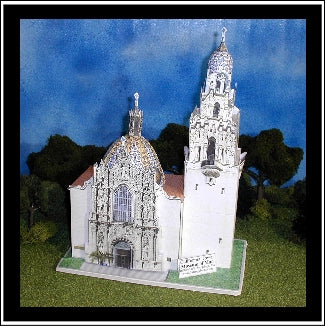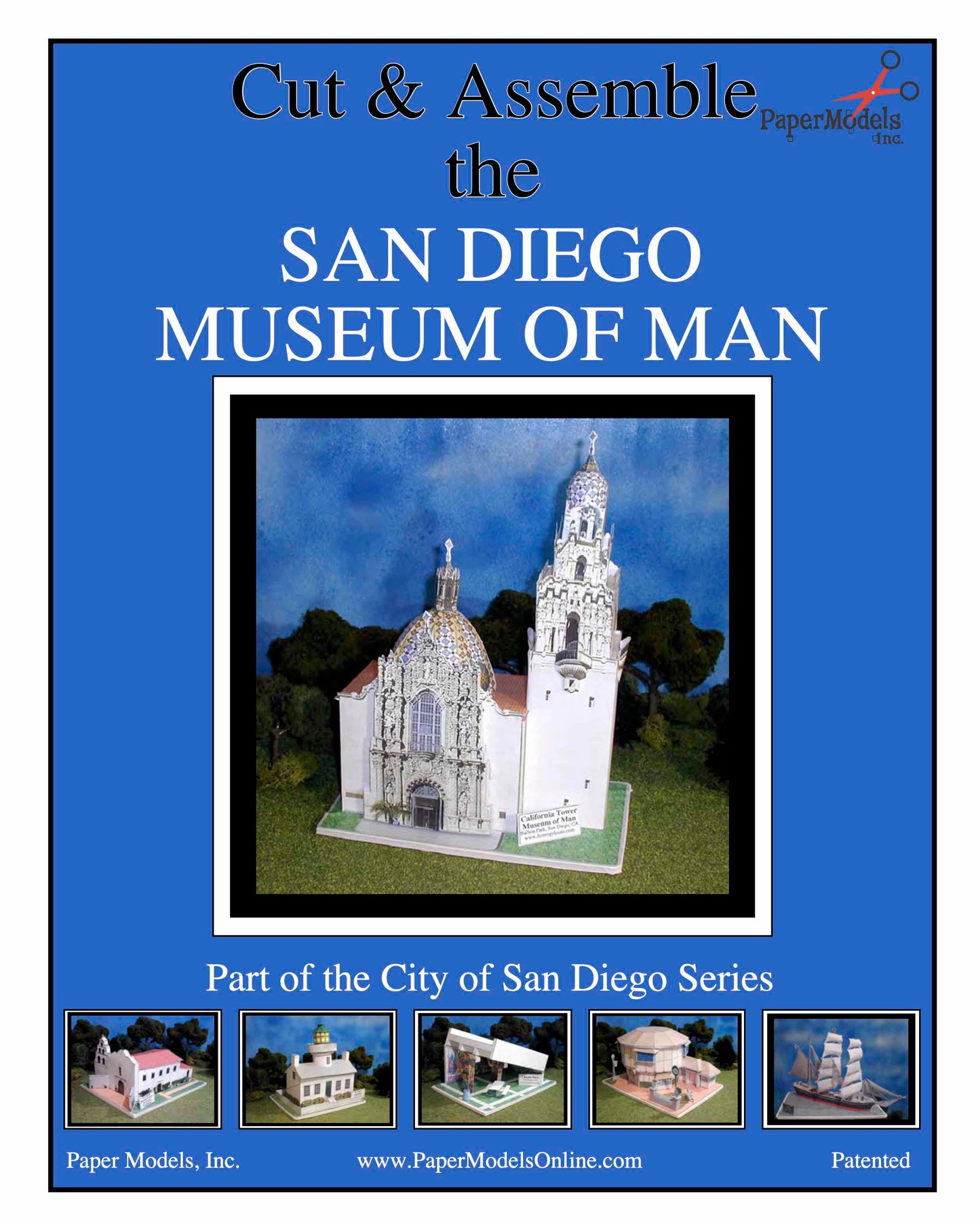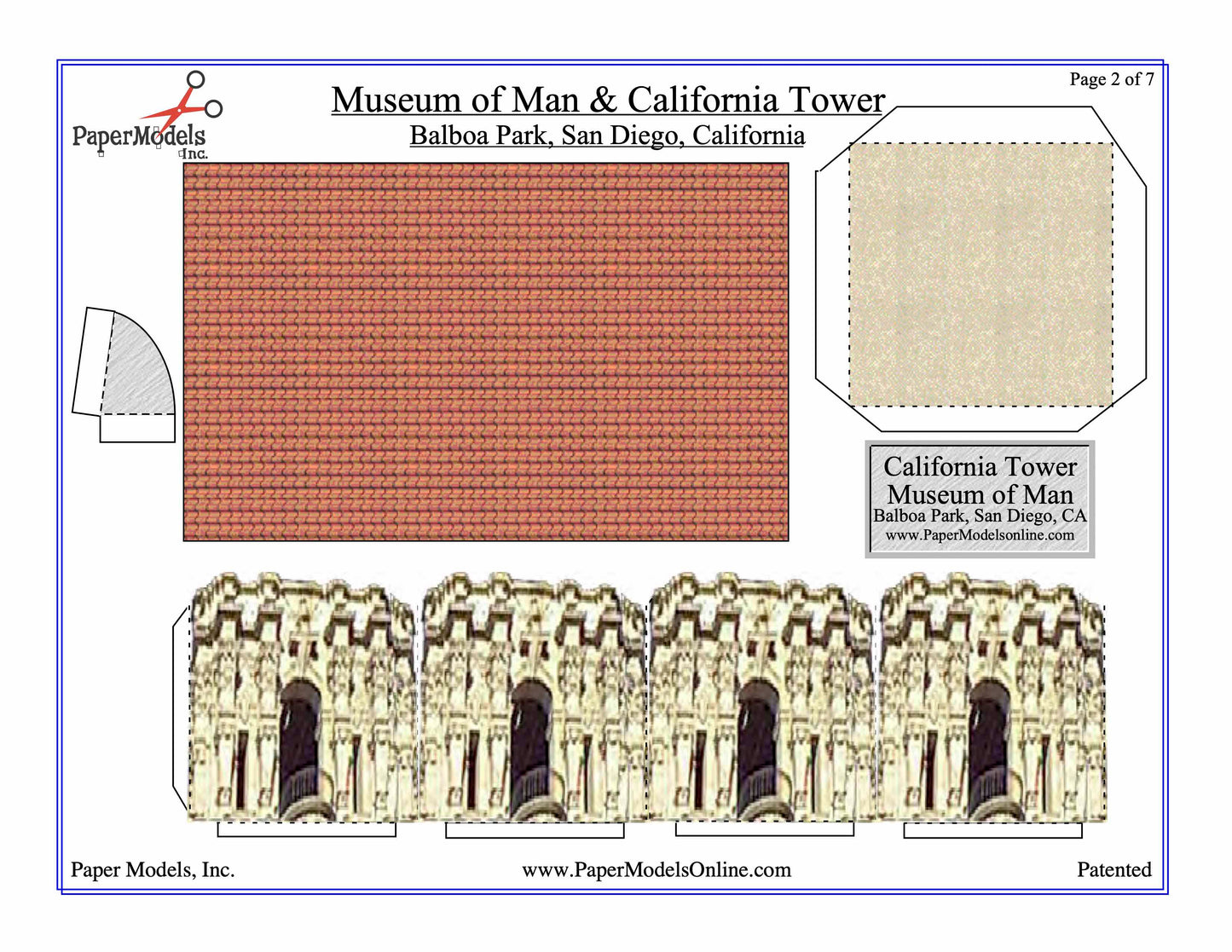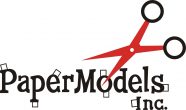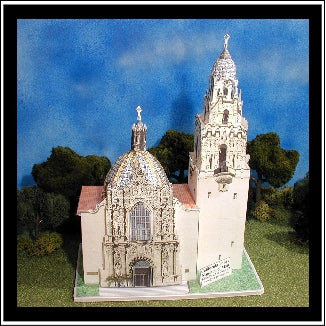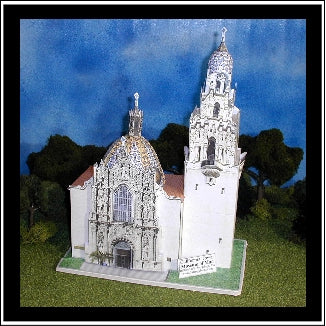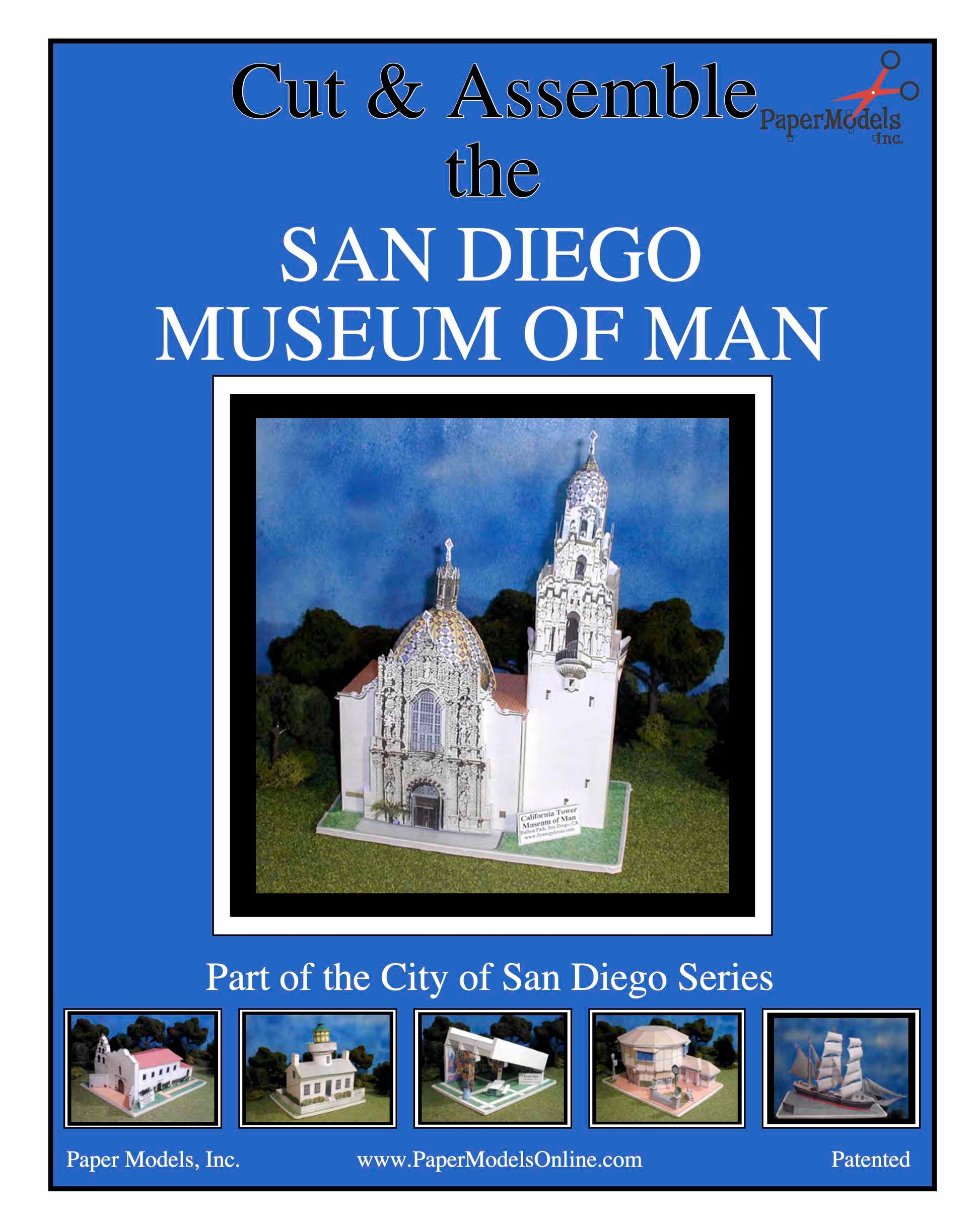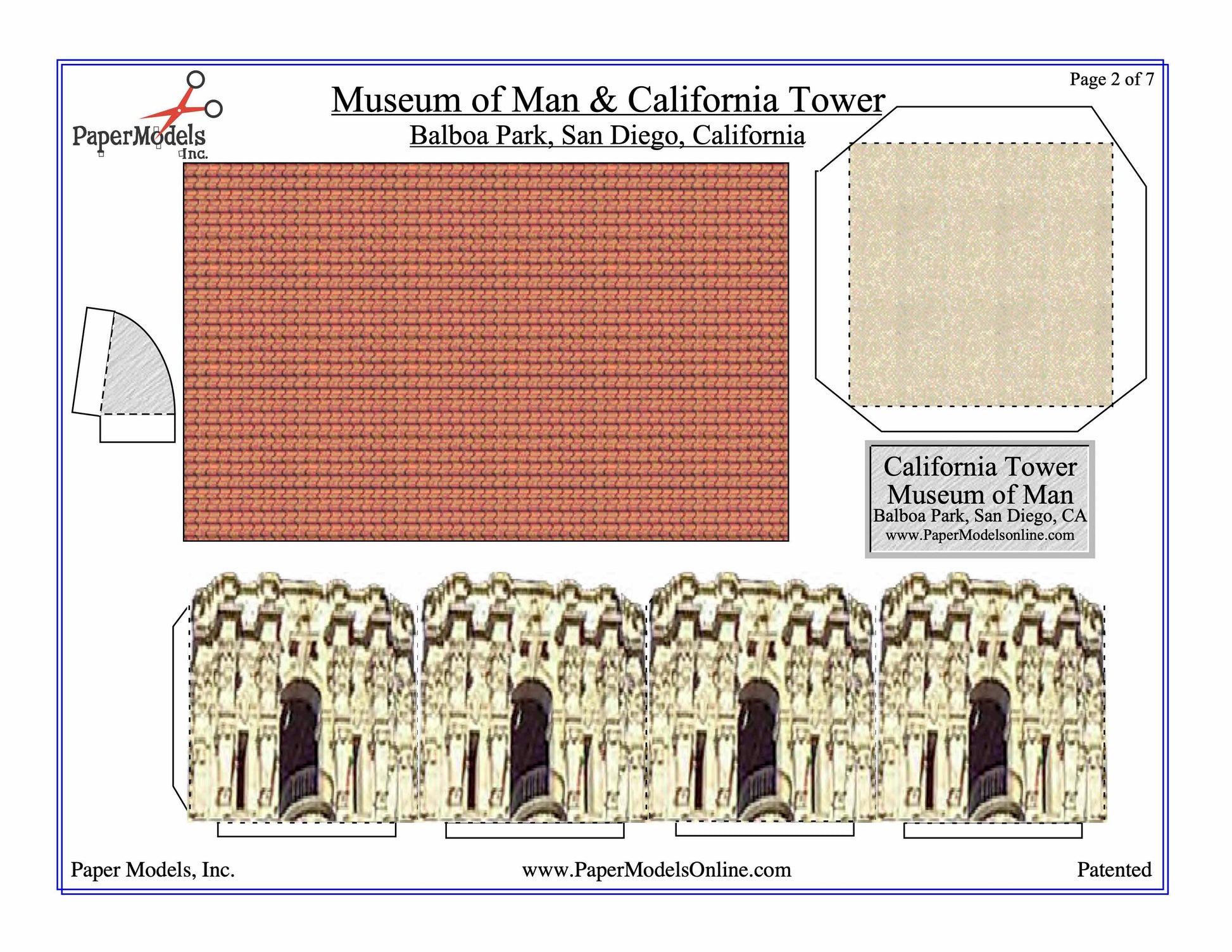Museum Of Man - Balboa Park, San Diego - Photorealistic
Museum Of Man - Balboa Park, San Diego - Photorealistic
Couldn't load pickup availability
🌟 Welcome to Paper Models Online – Your Shortcut to Academic Excellence! 🌟
Are you tired of stressing over last-minute school projects? Look no further! Paper Models Online is here to make your academic life a breeze.
🚀 Why Choose Us?
At Paper Models Online, we understand the pressure of looming deadlines and the desire for that coveted "A" grade. That's why we've crafted the perfect solution for you! Whether you're a student aiming for extra credit, a parent looking for quality time with your kids, or just someone in need of a break from the chaos, our paper models are your ticket to success!
💻 Instant PDF Download OR Pre-Printed & Shipped
You're in control! Choose from our instant PDF download, starting at just $9.95 for the 7"x10" size or $11.95 for the 10"x13" size.
Print it on your home or office printer using regular paper, or opt for the hassle-free pre-printed option. We'll ship it directly to your doorstep for a flat $5 fee via USPS First-Class Parcel, ensuring you get it in 1-3 days!
✂️ Easy Assembly, Maximum Impact
With just a pair of scissors, some glue, and an hour of your time, you can turn these paper sheets into stunning three-dimensional architectural replicas or complete science projects. The images on our website are real models made from our kits, and we even provide a history to help you craft an impressive report.
🎨 Unleash Your Creativity
Not into mission kits? No worries! Our models double as templates for your creative genius. Paint, trace, adjust sizes—your imagination is the only limit! Create a custom masterpiece that reflects your unique style and personality.
🛒 The Buying Process Made Simple
- Choose Your Size: 7"x10" or 10"x13"
- Choose Your Delivery: Instant PDF download or pre-printed and shipped
- Purchase Your Model: It's that easy!

📦 Typical Kit Sample
Each kit includes 8 to 18 pages, providing everything you need to bring the model to life. An "exploded view" guides you through assembly, and a complimentary history adds that extra touch for your report. Impress your teacher not just with creativity but also with your research skills!
Don't let deadlines stress you out. Choose Paper Models Online for your next school project, and let us be Your Best Way To Get An "A"! 🌟
 |
 |
 |
| Exploded View | Sample Pieces | Finished Model |
Free History For Your Report
Museum of Man & California Tower
Balboa Park, San Diego, California
History of the California Building in Balboa Park
Though built for the State of California as its contribution to the 1915 Panama- California Exposition in San Diego, the California Building did not house state exh-ib its. Twenty-eight counties of California exhibited in buildings about the Exposition grounds but the Departments of the State of California confined their exhibits to the Panama-Pacific International Exposition of 1915 in San Francisco.Very few people appear to have looked carefully at the south facade of the California
Building in San Diego's Balboa Park. H. K. Raymenton described it as Plateresque in
style. Trent Sanford thought it better than anything in Mexico or Spain. William Templeton Johnson called it the finest Spanish-Renaissance facade in existence, and
Thomas E. Tallmadge hailed it as the best example of Churrigueresque architecture in the world.
An article in the San Diego Union, January 1, 1915, asserted the California Building was "copied in many essential details from the magnificent cathedral at Oaxaca, Mexico." Christian Brinton- repeated this sug gestion in June of the same year. After checking with Bertram Goodhue, who designed the California Building, C. Matlack Price referred to the comparison as "palpably absurd." The Late- Renaissance -Cathe dral of Oaxaca, rebuilt in the early eighteenth century, has a compartmentalized facade with three h-orizon tal tiers and five vertical bays which hold one principal and two lateral doorways, and is flanked by two squat, single-stage towers. None of its details resemble those on the California Building.
Exposure to elements over the years caused bonding and dowels, holding facade to wall, to loosen and c-on crete to crack. Soot and acids from the air and salts in the original sands, pervaded th-e cast-concrete sur face, blanching and speckling the design. In 1964, the Art A. Gussa Construction Company of El Cajon replaced the plaster base of the tower with gunite concrete and braced the upper stages in an $80,000 project. In 1975, general contractors Claude F. Williams, Incorporated of Torrance, with Lew Anderson as project superintendent, undertook another tower, facade and west entrance archway renovation for $550,000. When built in 1913-14, the California Building cost the State of California $250,000.
The California Building has probably been mentioned more often than any other building in San Diego in studies of American architecture. The building is included in the National Register of Historic Places, as part of the California Quadrangle. In addition, the California Building tower is recorded in the Historic Buildings Survey in the Library of Congress.
Today, after almost one-hundred years of experimentation with Spanish-Renaissance and Baroque scrolls, grills, columns, estipites, cornices, gables, moldings, niches, shields, saints, shells, cupids, garlands and fruits, the facade of the California Building still surprises. It may be academic and constrained, compared to its predecessors in Mexico and Spain, but it is better than anything ever attempted since in the "decorative toothpaste" or Churrigueresque version of the Spanish-Revival style in Florida, Texas,- Arizona, and Cali fornia, including at least two attempts at direct imitation (St. Vincent's Church, Los Angeles, 1923, Albert C. Martin, architect, and the Garfield Park Administration Building, Chicago, Illinois, 1928, architects Michaelsen and Rognstad.)
© Copyright – Paper Models, Inc. – All Rights Reserved
Share

